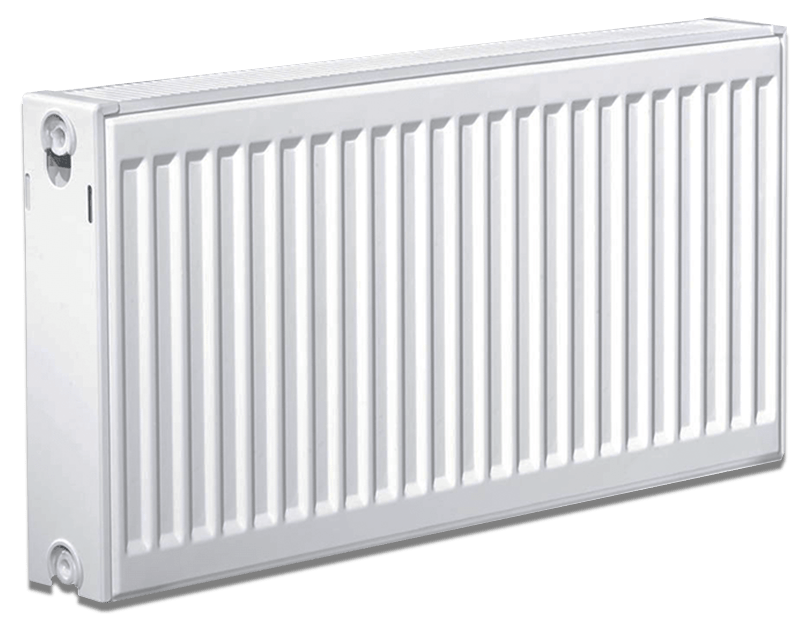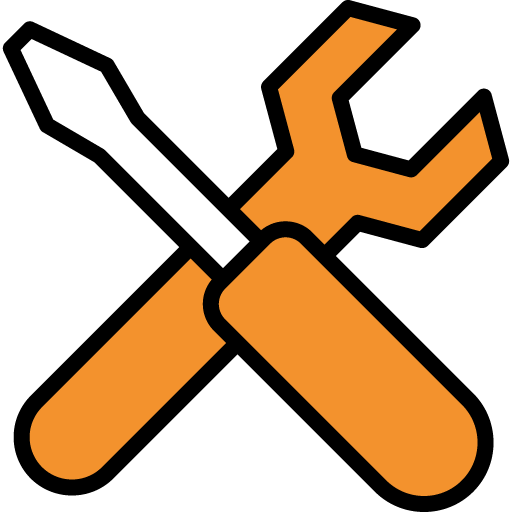Your basket is currently empty!
Written by
Radiator Hot at top but cold at bottom?

Why is my Radiator hot at the top but cold at the bottom?
No one likes to have a house that takes forever toheat up.
Are the radiators hot at the top and cold at the bottom? There are a few reasons that might be causing them to have cold spots.

Here we talk about some of the most common problems that might be causing the warm and cold patches in your radiators and how you can fix them by yourself if possible or by a Gas Safe registered engineer.
There may be air trapped in your radiators, or worse, a build-up of rust, sludge, or limescale which might be obstructing the flow of the hot water.
If this is the case, you may need to consider that if this gets into your boiler, you could be looking at the cost of a new boiler instead of just fixing a radiator.
Get the best quotes for boiler installation online in under 1 minute now
New Gas Boilers with FREE Hive Mini Smart Thermostat!
£0 Deposit & 0% Interest Finance available
Is your radiator cold at the bottom?
Your radiators may not be heating up at the bottom or properly for a variety of reasons, including:
- Debris in the filter or pipework
- The circulation pump is malfunctioning or contains air.
- The thermostatic radiator valve (TRV) is jammed and there is air in the system
- Whether Lockshield is fully open or closed
- Not functioning heat pump or boiler
- The heating system has been shut off.
- The fuel supply is exhausted
A blocked radiator
A buildup of limescale, sludge, rust, or debris moving through the system might result in blocked radiators. This limits the flow of water to the bottom of the radiator, therefore obstructions that initially start off small can gradually get larger.
Typically, blocked radiators are cold at the bottom and a warm at the top.
If the issue only affects one radiator that is cold at the bottom, it could be possible to remove it and replace it after giving it a garden hose flush. However, if more than one of your radiators aren’t heating up at the bottom, a professional power flush may be required.
There is a problem with the circulation pump
A central heating system’s circulating pumps circulate hot water, moving it from the boiler via the pipes to your radiators and, in some situations, your hot water cylinder before returning to the boiler.
Airlocks or clogs in the system can happen occasionally. In addition to the radiators not heating up at the bottom or evenly, other signs that this might have happened include a water leak from the pump, odd noises originating from the pump, a hot-to-the-touch pump casing, and no hot water.
The heating system has air in it
If there is air in the system, the radiator may only heat a small area at the bottom or not at all, depending on the amount of air present. To remove the air, you must bleed the radiator.
You must let more water in as you let the air out of the system. While a high-pressure system will have a valve (or two) to let the water in, a gravity-fed central heating circuit should fill automatically. This valve shouldn’t be left open. Bleed the radiator after a small amount of system pressurisation. It is typically ideal to conduct this with 2 individuals, but if in doubt, consult an engineer.
Your Lockshield Has Been Positioned Incorrectly
A lockshield is located on the radiator’s side that the TRV is on. This device, which resembles a little valve with a cap on it, balances radiators. Instead of returning to its original position, which is frequently only a quarter turn open, this can frequently happen when a radiator is moved (for example, to paint behind a radiator), where it is completely opened again when the radiator is replaced.
As a result, the radiators that are the furthest away from the boiler will rarely receive heat and the boiler water will now circulate more via the closed radiators.
If the radiators upstairs (especially those closest to the boiler) are getting hot yet the radiators below are cold, then that is a good indication that this is your issue. It will be necessary to rebalance the system.
Your Heat Pump or Boiler Isn’t Functioning
A broken boiler or heat pump is an obvious cause of defective radiators. Verify that your boiler is set correctly and that it looks to be functioning; a fault code will often let you know if there is a problem. In some circumstances, a Gas Safe licenced heating engineer will need to be called out, but you could discover that you can fix it yourself.
Check to make sure your heat pump is operating normally and isn’t blocked with debris if you use one to heat your radiators.
In some cases, a new boiler might be needed.
Get fixed prices online in just 20 seconds – Click here
The Pressure of the Water Has Fallen
A pressure drop that results in the boiler cutting out could be the cause of the boiler cutting out if you have a combi boiler or high-pressure central heating system.
If this is a continuous issue with your combi boiler, look into what the best combi boiler on the market is and choose the best choice for you.
Look at the pressure dial; it should be within the parameters listed in the user guide. If not, you must top off the water to repressurize the boiler (see your manual for instructions).
Your central heating isn’t running
It may seem apparent, but before you do any of the aforementioned, you should make sure that your central heating hasn’t accidentally been turned off, set to summer mode, or set to heat only the water. You don’t want to call a plumber only to find out that this was the root of the problem.
Running on Nothing
Another unflattering reason why radiators don’t heat up (a bit like running out of petrol).
Could it be that you forgot to check your fuel levels and ran out if your heating system is powered by LPG or heating oil?
One problem with this is that when the oil runs out, debris in the tank may infiltrate the heating system. As a result, your system might require professional power flushing. The basic line is that you should periodically check the level of your oil tank to make sure you have enough
Get the best quotes for boiler installation online in under 1 minute now
New Gas Boilers with FREE Hive Mini Smart Thermostat!
£0 Deposit & 0% Interest Finance available
How does this stop my radiator from getting warm?
This will be preventing the bottom section of your radiator from getting warm. To solve this issue, we recommend bleeding your radiator. If this doesn’t work you will need to flush the heating system to flush out the build-up.

If radiators become cold at the bottom and warm at the top, it is likely that hot water is being redirected or restricted. This is often caused by a buildup of sludge.
This means that the hot water does not reach the radiator’s entire extent while the central heating is turned on. It leaves the radiator cold at the bottom.
This will heat up your radiator around the water entry/exit points at the bottom. The sludge is typically found in the middle or at the bottom.
Get the best quotes for boiler installation online in under 1 minute now
New Gas Boilers with FREE Hive Mini Smart Thermostat!
£0 Deposit & 0% Interest Finance available
What else can cause a radiator to be cold at the bottom?
In 99 per cent of these cases, the culprit is a buildup of sludge or grime. Radiators are made of iron or steel, so iron compounds can slowly form as water passes through them.

The main problems are magnetite and haematite, two forms of iron oxide. However, there may be other impurities such as limescale in the water that could cause grime to build up. Once there is a small accumulation, it becomes easy to add more material and quickly multiply.
Once enough sludge has built up to block one of the radiator’s flow channels, the channel will stop letting hot water through.
This accounts for the cooling effect in the concentrated areas. The radiator’s bottom will stop receiving hot water if there are multiple blocked channels. These areas of radiators may retain some heat from the radiator’s metallic heating and possibly some warmth from the sludge.
A corrosion inhibitor, which is highly recommended, will prevent iron compounds from forming in steel and iron radiators.
It is also important to note that aluminium radiators, which are the most popular type in certain European countries and growing in popularity in the UK, don’t have iron oxide sludge buildup if there’s no steel in them.
Get the best quotes for boiler installation online in under 1 minute now
New Gas Boilers with FREE Hive Mini Smart Thermostat!
£0 Deposit & 0% Interest Finance available
How to Fix Radiators That Are Cool at The Bottom
This problem can be solved in three ways: physical, chemical, and power flush. A chemical flush is the quickest unless you want to remove and clean the radiators yourself which can take a while but is free!
Add a chemical cleaner to your central heating system

You can add a chemical to the radiator system. This will remove the sludge just as you would pour drain cleaner down the hole. This is a one-time job. You add the cleaner to your radiator system and let it heat up for about an hour before flushing it out.
The cleaner may be left on for as long as a week in extreme cases. After that time, it must be taken out and replaced with new water. This method of cleaning radiators is best left to professionals. We won’t give any details on how it’s done.
Clean Your Radiators by draining
You can remove and clean the radiator without having to call an engineer or use chemical cleaners. If you are a competent DIYer, it is not difficult to remove and clean a radiator.
You would simply need to isolate this radiator, but beware the radiator will still be full of water until fully drained. Once isolated, you need to find the drain valve and let the water flow out.
After the water has stopped flowing, turn off the valves. Then remove the brackets from the radiator. It would help if you did not undo all the valves as this could cause your heating system to become inefficient. Attach a water hose to the radiator and let it run for a while. To make sure, you can test the hose at different openings.
Is your boiler causing your radiators to be cold at the bottom?
Here you can compare boiler quotes, we get you 3 quick and free boiler quotes from both small and large boiler companies that provide A-rated energy-efficient boilers from leading manufacturers including Viessmann and Worcester Bosch. We provide you with quotes for new and reliable boilers all available on flexible finance options making us the best place to go for great boiler on finance deals.
Get the best quotes for boiler installation online in under 1 minute now
New Gas Boilers with FREE Hive Mini Smart Thermostat!
£0 Deposit & 0% Interest Finance available
Written by
Get the best quotes for boiler installation online in under 1 minute now
New Gas Boilers with FREE Hive Mini Smart Thermostat!
£0 Deposit & 0% Interest Finance available





